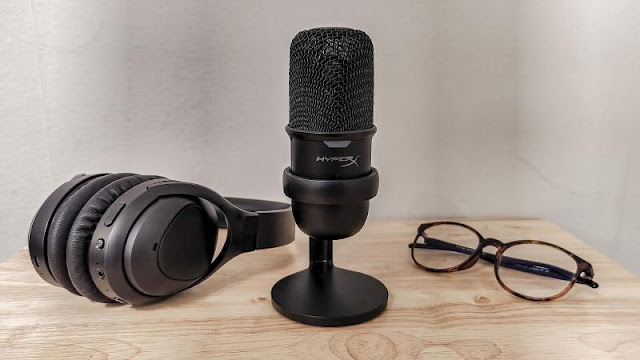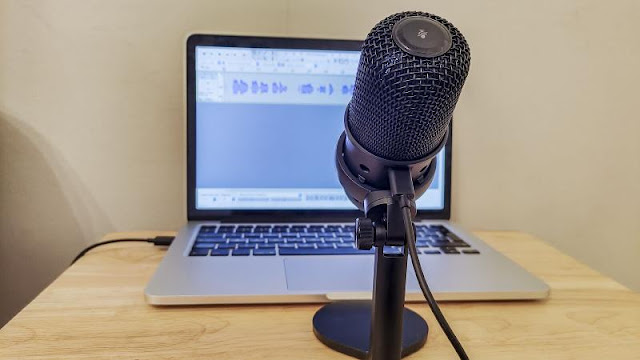The HP sub-brand's cheapest USB microphone to date is extremely easy to use, delivering solid audio for its impressively affordable price.
Should I Buy The HyperX SoloCast microphone?
Pros
- Extremely easy to use
- Lightweight and compact
- Crisp, clear audio
- Affordable
Cons
- Only one recording mode
- No physical sound controls
- No software or customisation
Our Verdict
Price When Reviewed
- $59.99
HyperX has released a huge range of products since being founded in 2002, but in recent years the brand has focused on a new product category: microphones. Following the growth of YouTube and streaming on sites such as Twitch, there’s a real demand for quality audio within the gaming community.
A decent microphone usually costs in excess of £100/US$100, but many people starting out can’t afford to drop that sort of money on just one area of their setup. The HyperX SoloCast is a potential solution, aiming to deliver a convincing experience at an extremely affordable price.
But is the HP-owned company onto a winner here, or are there simply too many compromises at this ultra-affordable price point? Here’s our full review.
Design And Features
- Compact design
- Extremely lightweight
- Mute button but no other physical controls
The HyperX SoloCast takes a simple, no-frills approach to design. The microphone itself opts for a classic cylindrical build, with a jet-black grille complemented by a shiny plastic exterior elsewhere. This muted aesthetic is something we’ve seen countless times before, but it’s clear HyperX has prioritised functionality over looks at this price point.
Of course, these dimensions increase considerably when using the SoloCast with its base, which comes pre-attached in the box. This adds plenty of extra functionality; the mic can be rotated into one of five set modes, while tilt can also be adjusted to suit your setup.
Even with the base attached, it weighs just 430g (261g without). Considering most premium mics come in at well over 1kg, the SoloCast is refreshingly lightweight and extremely portable.
However, there are very few controls on the device itself. Being limited to the cardioid recording pattern means there’s no option to switch between them, while you’ll have to adjust gain from within the app you’re using to record audio. It’s nothing more than a minor inconvenience for me, but might be a dealbreaker if you’re used to dedicated controls.
In fact, the only physical button is a mute toggle on the top of the device. This is a great alternative to scrambling for mute in the relevant app, with a large LED glowing red when recording is in progress. I did encounter an issue where the LED light to be flashing on and off while muted at times, which occasionally caused some recording problems.
However, a firmware update available on the HyperX website fixes this issue and lets you disable the light if you'd prefer.
Sound Quality
- Only Cardioid sound mode available
- Impressive quality for voices
- Not recommended for other types of audio
As I alluded to above, getting started with the HyperX SoloCast is extremely easy. Just connect the mic to your computer via the included cable and select it as the input device within your preferred recording app. That was Audacity during my testing, alongside a handful of Zoom calls.
The SoloCast is a condenser microphone, meaning it uses two metal plates (one moveable, one fixed) to generate sound. It’s the most popular style for streaming and podcasting, although you’re limited to the cardioid recording mode - this means the SoloCast will only record sound from directly in front of it.
That’s fine for most beginners, but you do miss out on popular omnidirectional (sound from all directions) and bidirectional (sound from in front and behind in figure-8 motion) settings. With just one capsule, there’s also no option for stereo sound.
I primarily used the SoloCast to record for our weekly podcast Fast Charge, and it was a noticeable upgrade over the mic built into my headphones. It also did a good job of filtering out much of the road noise nearby, something more sensitive microphones could easily have picked up.
The SoloCast is lacking in bass and doesn’t have the depth of sound that more expensive mics offer, so I’d recommend sticking to voice content. But for streaming or recording your side of a podcast via Zoom, it’s a great option.
Price And Value For Money
The HyperX SoloCast has limited availability right now, but you can still pick it up for a great price. The microphone is in stock at £49.99 via Currys in the UK, while a $20 discount means it’s available for just $39.99 at Amazon US. At that price, it feels like a no-brainer – hopefully Amazon UK will offer a similar deal once it’s back in stock.
It’s also one of the cheapest USB mics you can buy, undercutting every other entry in our guide to the best microphones for streaming and podcasting. There are some compromises to reach this ultra-affordable price, but it still represents excellent value for money.
Verdict
If you’re looking to dip your toe into the world of USB mics, the HyperX SoloCast is the perfect place to start. An extremely compact and lightweight build belies its impressive sound, with crisp vocals and minimal background noise.
There’s no companion app or settings to tweak (only the Cardioid polar pattern is available), but that makes the SoloCast extremely easy to use. An included base is a great starting point, but it’s compatible with most boom arms and stands on the market.
With just a USB-C port required, the SoloCast also works on almost every major platform. Key streaming and chat apps are also optimised to work well.
It would be easy to linger on the features not available here, but I’d prefer to focus on everything the HyperX SoloCast offers, at a fraction of the cost of most USB microphones.
Specs
- USB 2.0 Condenser Microphone
- Sampling rates: 48KHz, 44.1KHz, 32KHz, 16KHz, 8KHz
- 16-bit depth
- Cardioid directivity pattern
- 174 x 78 x 97 mm
- 261g (429.9g with stand and cable attached)








0 comments:
Post a Comment